
Juneteenth is a federal holiday in the United States commemorating the end of slavery. Its name is a portmanteau of "June" and "nineteenth", as it is celebrated on the anniversary of June 19, 1865, when as the American Civil War was ending, Major General Gordon Granger ordered the final enforcement of the Emancipation Proclamation in Texas. Originating in Galveston, Juneteenth has since been observed annually in various parts of the United States, often broadly celebrating African-American culture.

The Detroit Institute of Arts (DIA), located in Midtown Detroit, Michigan, has one of the largest and most significant art collections in the United States. With over 100 galleries, it covers 658,000 square feet (61,100 m2) with a major renovation and expansion project completed in 2007 that added 58,000 square feet (5,400 m2). The DIA collection is regarded as among the top six museums in the United States with an encyclopedic collection which spans the globe from ancient Egyptian and European works to contemporary art. Its art collection is valued in billions of dollars, up to $8.1 billion USD according to a 2014 appraisal. The DIA campus is located in Detroit's Cultural Center Historic District, about 2 miles (3.2 km) north of the downtown area, across from the Detroit Public Library near Wayne State University.
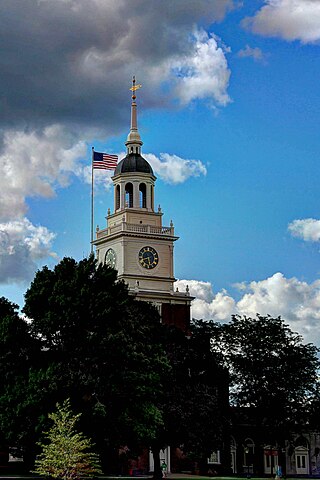
The Henry Ford is a history museum complex in the Detroit suburb of Dearborn, Michigan, United States. The museum collection contains the presidential limousine of John F. Kennedy, Abraham Lincoln's chair from Ford's Theatre, Thomas Edison's laboratory, the Wright Brothers' bicycle shop, the Rosa Parks bus, and many other historical exhibits. It is the largest indoor–outdoor museum complex in the United States and is visited by over 1.7 million people each year. It was listed on the National Register of Historic Places in 1969 as Greenfield Village and Henry Ford Museum and designated a National Historic Landmark in 1981 as "Edison Institute".
The culture of Detroit, Michigan, has influenced American and global culture through its commercial enterprises and various forms of popular music throughout the 20th and 21st century. Its automotive heritage plays an important role in the city's culture.

Jessica Care Moore is an American poet. She is the CEO of Moore Black Press, executive producer of BLACK WOMEN ROCK!, and founder of the literacy-driven jess Care moore Foundation. An internationally renowned poet, playwright, performance artist, and producer, she is the recipient of the 2013 Alain Locke Award from the Detroit Institute of Arts.
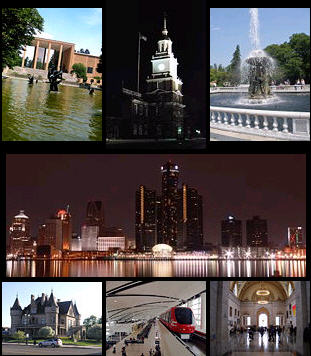
Tourism in metropolitan Detroit, Michigan is a significant factor for the region's culture and for its economy, comprising nine percent of the area's two million jobs. About 19 million people visit Metro Detroit spending an estimated 6 billion in 2019. In 2009, this number was about 15.9 million people, spending an estimated $4.8 billion. Detroit is one of the largest American cities and metropolitan regions to offer casino resort hotels. Leading multi-day events throughout Metro Detroit draw crowds of hundreds of thousands to over three million people. More than fifteen million people cross the highly traveled nexus of the Ambassador Bridge and the Detroit-Windsor Tunnel annually. Detroit is at the center of an emerging Great Lakes Megalopolis. An estimated 46 million people live within a 300-mile (480 km) radius of Metro Detroit.

The culture of San Antonio reflects the history and culture of one of the state's oldest and largest cities straddling the regional and cultural divide between South and Central Texas. Historically, San Antonio culture comes from a blend of Central Texas and South Texas (Southwestern) culture. Founded as a Spanish outpost and the first civil settlement in Texas, San Antonio is heavily influenced by Mexican American culture due to Texas formerly being part of Mexico and, previously, the Spanish Empire. The city also has significant German, Anglo, and African American cultural influences. San Antonio offers a host of cultural institutions, events, restaurants and nightlife in South Texas for both residents and visitors alike.

The Michigan Science Center(MiSci) is a Smithsonian-affiliate science museum in Detroit, Michigan. The mission of the Michigan Science Center is to inspire curious minds of all ages to discover, explore and appreciate science, technology, engineering and math (STEM) in a creative, dynamic learning environment. As a 501(c)(3) nonprofit organization, MiSci relies on the generous support of donors, sponsors, community partners and members.

The Detroit International Riverfront is a tourist attraction and landmark of Detroit, Michigan, extending from the Ambassador Bridge in the west to Belle Isle in the east, for a total of 5.5 miles. The International Riverfront encompasses a cruise ship passenger terminal and dock, a marina, a multitude of parks, restaurants, retail shops, skyscrapers, and high rise residential areas along with Huntington Place. The Marriott at the Renaissance Center and the Robert's Riverwalk Hotel are also situated along the International Riverfront. Private companies and foundations together with the city, state, and federal government have contributed several hundred million dollars toward the riverfront development. Key public spaces in the International Riverfront, such as the RiverWalk, Dequindre Cut Greenway and Trail, William G. Milliken State Park and Harbor, and a cruise ship passenger terminal and dock at Hart Plaza complement the architecture of the area. The area provides a venue for a variety of annual events and festivals including the Detroit Electronic Music Festival, Detroit Free Press International Marathon, the Detroit International Jazz Festival, Motor City Pride, the North American International Auto Show, River Days and Detroit China Festival. In February 2021, the Detroit International Riverfront was voted best riverwalk in the United States by USA Today readers. It was selected a second time as the best riverwalk in the U.S. in 2022.
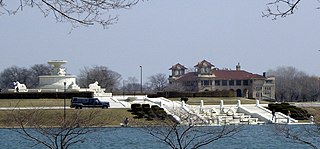
Belle Isle Park, known simply as Belle Isle, is a 982-acre island park in Detroit, Michigan, developed in the late 19th century. It consists of Belle Isle, an island in the Detroit River, as well as several surrounding islets. The U.S.-Canada border is in the channel south of Belle Isle.
Charles Howard Wright was a Detroit physician and founder of the Charles H. Wright Museum of African American History.

The University of Michigan Museum of Natural History is a natural history museum of the University of Michigan in Ann Arbor, Michigan, United States.
The culture of Columbus, Ohio, is particularly known for museums, performing arts, sporting events, seasonal fairs and festivals, and architecture of various styles from Greek Revival to modern architecture.
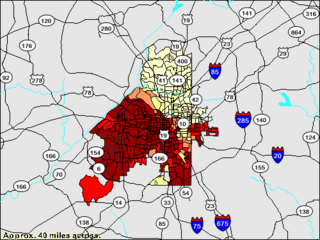
Black Atlantans form a major population group in the Atlanta metropolitan area, encompassing both those of African-American ancestry as well as those of recent Caribbean or African origin. Atlanta has long been known as a center of black entrepreneurship, higher education, political power and culture; a cradle of the Civil Rights Movement.

The Ford Rotunda was a tourist attraction that was originally located on the South Side of Chicago, Illinois, and later was relocated to Dearborn, Michigan. It was among the most popular tourist destinations in the United States, receiving more visits in the 1950s than the Statue of Liberty. It was destroyed by a fire on November 9, 1962.
Melba Joyce Boyd is a significant figure in African-American poetry. She has authored 13 books and is a Distinguished University Professor and Chair of the Department of Africana Studies at Wayne State University.
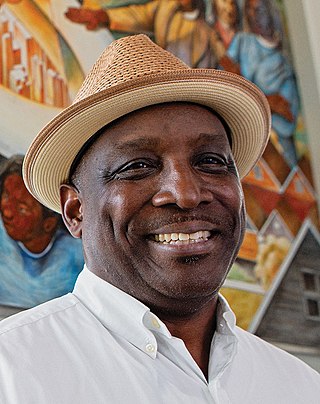
Hubert Massey is an artist of a variety of mediums, and well known for his large-scale installations in the Buon Fresco style. Massey has 15 works of public art throughout the state of Michigan, and has been commissioned by various local organizations including universities, museums, hotels, and the Michigan Department of Transportation. He now resides in Detroit, Michigan with his wife Marquita.
LeRoy Foster (1925–1993) was an American painter from Detroit, Michigan. He is best known for the large murals he painted on the walls of Detroit institutions, such as “The Life & Times of Frederick Douglass,” at the Detroit Public Library’s Frederick Douglass Branch, and “Renaissance City,” at Cass Technical High School. He also painted portraits of prominent figures like singer and civil rights activist Paul Robeson.
Shirley Woodson is an American visual artist, educator, mentor, and art collector who is most known for her spectacular figurative paintings depicting African American history. Her work that spans a career of 60 years and counting can be found in the collections of the Detroit Institute of Arts, the Charles H. Wright Museum of African American History, and the Studio Museum in Harlem, among other institutions. Woodson was named the 2021 Kresge Eminent Artist. The Detroit Institute of Arts exhibited 11 of her pieces in "Shirley Woodson: Shield of the Nile" Dec. 18, 2021 through June 12, 2022, the museum's first solo exhibition of Woodson's work. A painting by Woodson is featured in the Museum of Contemporary Art Detroit exhibition "Ground Up: Reflections on Black Abstraction" April 8-August 16, 2022.
















